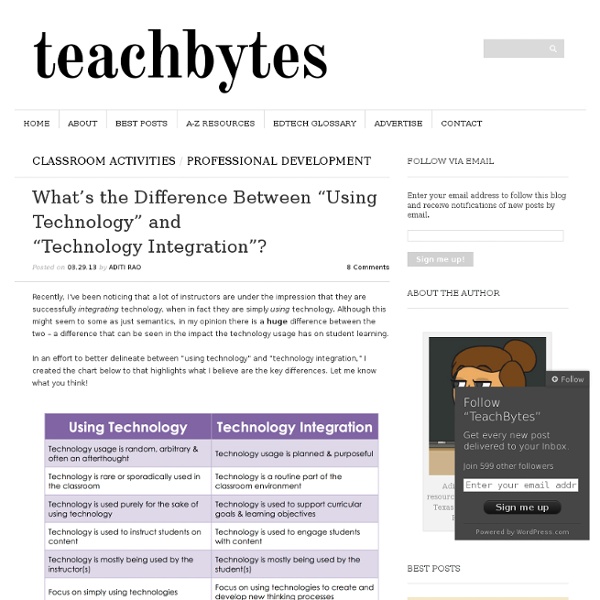



Didaktisk design Staffan Selander reflekterar över teknikens inverkan på lärande och undervisning: Avsnitt i introduktionstexten: Didaktisk forskning och didaktik i relation till skolarbete Ett designteoretiskt perspektiv på lärande Multimodalitet Den digitala och globala utmaningen Utbildningens grundläggande uppgifter Design av lärsekvenser Förutsättningar och iscensättning Första transformationscykeln Andra transformationscykeln Ett dialogiskt och mångdimensionellt perspektiv I didaktisk design presenterar vi digitala verktyg för undervisning och lärande samt ett antal länkar med en mängd konkreta exempel från olika lärmiljöer. I den här (löp)texten kan du läsa mer om ett designteoretiskt, didaktiskt och multimodalt perspektiv på undervisning och lärande i digitala miljöer. Denna text innehåller främst reflektioner och teoretiska resonemang. Didaktisk forskning och didaktik i relation till skolarbete Till textens början Ett designteoretiskt perspektiv på lärande Till textens början Multimodalitet
Knowmads in Society 3.0 Remember nomads? In the pre-industrial age, nomads were people that moved with their livelihood (usually animal herding) instead of settling at a single location. Industrialization forced the settlement of many nomadic peoples… …but, something new is emerging in the 21st century: Knowmads. A knowmad is what I term a nomadic knowledge worker –that is, a creative, imaginative, and innovative person who can work with almost anybody, anytime, and anywhere. The coffee shop has become the workplace of choice for many knowmads. The remixing of places and social relationships is also impacting education. Who are these knowmads in Society 3.0? (To find out, click on the picture) Are you a knowmad?
10 Things Every Teacher Should Know How To Do With Google Docs Google Docs is a powerful word processing tool that many schools have adopted. As it’s similar to Microsoft Word and other word processing tools, most of its features are intuitive to use. However, in addition to completing many of the functions of a traditional word processor, Google Docs provides even more capabilities that can be invaluable to educators. Share & Collaborate with Google Docs One of the most powerful features of Google Docs is that you can share and collaborate on documents with others. Sharing with individuals is relatively easy. Comments And Suggested Edits Sometimes, you don’t want to make changes on a document. Others can reply to your comments when they make changes or ask for clarification. Revision History One of my favorite tools in Google Docs is “Revision History.” Add-Ons Recently, Google released a suite of “Add-ons.” Leave Voice Comments Sometimes written comments are not enough. Research Tools Google will allow you to do research right within the document!
Building soft skills: Why the business community wants to invest in preschoolers A group of about 20 Christopher House preschoolers are sitting as quietly as they can in front of their teacher, Jill Peterson. She’s just asked them to put their fingers on their nose and is waiting for the group to settle down before dismissing them to play time. She reminds them what their options are today: at the art table, there’s clay. But this isn’t just ordinary play. Allen Rosales is the school’s curriculum director. “What’s math knowledge if you can’t speak up, if you can’t have a perspective, if you can’t work as a group collaboratively?” Still, as Rosales points out, those “soft” skills aren’t so soft because they’re difficult to develop. Hard skills are pretty self-explanatory: math, science and reading. Chicago businessman J.B. “Collectively, these are things we sometimes refer to as character,” said Pritzker, co-leader of The Pritkzer Group. That’s backed up by people like Nobel Prize-winning economist James Heckman at the University of Chicago.
Create Surveys and Graded Quizzes with Google Drive » Teach Amazing! Written by Teach Amazing! Using Google apps such as Google Forms and Google Sheets (spreadsheet similar to Microsoft Excel) is free and easy. These tools combine to provide and excellent way to receive feedback and even distribute self-graded quizzes. As of the date of this post, Google has updated the look of Google Drive and moved things around. So, even if you have done this before make sure you read this post to find out where everything is. Step 1: Access Google Drive In your browser, navigate to drive.google.com/ and sign in to your Google account. Step 2: Create a Google Form To create a new form, which can be used as a survey or a quiz, click New > More > Google Forms. Step 3: Add Title, Description, and First Question Type a Title and Description for the Quiz.For the rest of this post we will use the word “quiz.” Step 4: Additional Questions Click Add Item to add additional questions. For each question, type a Question Title, select the Question type, and type your answer choices.
På begäran: #flipsv och #GAFE för yngre elever i samarbete med @SwensonAnna Lånat struktur av @Askeback | Att lära för livet Vi hade en planerad hangout idag, @sarabruun3, jag och ett helt gäng som hänger på twitter och ventilerar, planerar, delar och delar och delar. Till mångas glädje. Frågan kom hur vi i de yngre åren använder Google Apps for Education – förkortat GAFE. @Askeback bloggade om 10 anledningar att använda Google och det är en bra början. En plats att samla dokument och arbeten från olika appar i iPaden. Skapa en blogg. Svenska: Läs din faktatext varje dag – flera gånger Texten finns här: Matte: Se filmen om läxan här: Matteläxa repetition additionRepetera addition på Det finns många, många fler användningsområden. Dela, dela, dela…. /Susanne